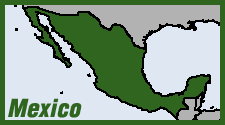 Tens of thousands of people participated in a silent "March for Peace With Justice and Dignity" in Mexico City on May 8 to call for an end to the US-backed militarization of Mexico's fight against drug trafficking. Protesters, most of them dressed in white, carried signs reading: "No more blood," "Justice," "Peace," "Let's stop the bullets," "Life isn't trash" and, above all, "We've had it up to here" (estamos hasta la madre). More than 35,000 Mexicans have died in drug-related violence since President Felipe Calderón Hinojosa sent troops into the streets soon after taking office in December 2006.
Tens of thousands of people participated in a silent "March for Peace With Justice and Dignity" in Mexico City on May 8 to call for an end to the US-backed militarization of Mexico's fight against drug trafficking. Protesters, most of them dressed in white, carried signs reading: "No more blood," "Justice," "Peace," "Let's stop the bullets," "Life isn't trash" and, above all, "We've had it up to here" (estamos hasta la madre). More than 35,000 Mexicans have died in drug-related violence since President Felipe Calderón Hinojosa sent troops into the streets soon after taking office in December 2006.
As of the early afternoon on May 8, while the demonstration was still growing, the Federal District (DF, Mexico City) police gave a crowd estimate of 24,000; later the police raised their estimate to more than 80,000, while the organizers said 200,000 people had participated. Similar demonstrations were scheduled for the weekend of May 7-8 in 38 other Mexican cities in at least 12 states, with plans for support events in some 30 cities in Europe and North America.
The mobilization was inspired by Javier Sicilia, a well-known poet whose son Juan Francisco was killed in late March, apparently by gang members. Starting on May 5, Sicilia had led several hundred people from Cuernvaca, Morelos, where he lives, on an 85-km walk to Mexico City. They arrived in the Federal District on May 7 and spent the night at the campus of the National Autonomous University of Mexico (UNAM), after an evening event that included Mexican music and a performance of Mozart's Requiem. The May 8 march proceeded from the campus to the Zócalo plaza in downtown Mexico City.
Over 150 organizations endorsed the weekend's demonstrations, along with many victims of the violence. Olga Reyes Salazar, whose family took refuge in Mexico City after six members had been murdered in Ciudad Juárez, was scheduled to read demands at the protest in the capital.
Immigrants and immigrant rights activists were also prominent in the events: drug gangs regularly rob, kidnap and even murder immigrants from Central America. A group of immigrants and activists set off for Mexico City on May 4 from Ciudad Ixtepec, in the southern state of Oaxaca, riding "The Beast"—the freight train often used by immigrants traveling north. Another contingent of 80 immigrants joined hundreds of Mexicans in the March for Peace in Puebla, capital of the central state of Puebla. Their banner read: "We immigrants too have had it up to here." (Adital, Brazil, May 4; Agencia Reforma, Mexico, May 4, via NTRzacatecas.com; El Universal, Venezuela, May 8; El Universal, Mexico, May 8; La Jornada, Mexico, May 8, May 9)
At least 15,000 members and supporters of the rebel Zapatista National Liberation Army (EZLN), some wearing ski masks, turned out for the May 7 March for Peace in San Cristóbal de las Casas in the southeastern state of Chiapas. At what was the mostly indigenous group's largest mobilization at least since 2001, speakers stressed that they hadn't come "to speak of our sorrows, of our struggles, of our lives and deaths"; instead, they were there to express solidarity with "those who want life." The violence in the "drug war" has largely been concentrated in the north, near the US border. (La Jornada, May 8)
From Weekly News Update on the Americas, May 8







Recent comments
1 week 6 days ago
5 weeks 5 days ago
9 weeks 5 days ago
10 weeks 3 days ago
20 weeks 3 days ago
24 weeks 4 days ago
25 weeks 4 days ago
25 weeks 4 days ago
46 weeks 5 days ago
50 weeks 6 days ago